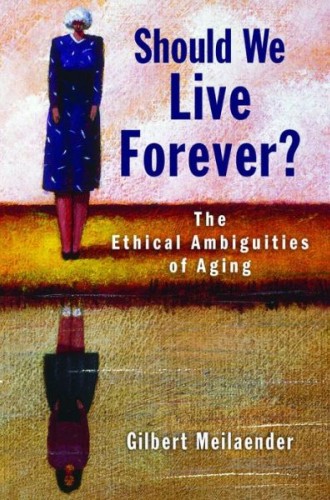Should We Live Forever? by Gilbert Meilaender
By book 10 of his Confessions, Augustine has completed the narration of his long, often tortuous spiritual journey from paganism to Christianity. He has not, however, found a resting place. Having gone through a cathartic conversion, Augustine might now be expected to provide his readers with insights into the nature of the Christian faith and the meaning of life. Instead, he acknowledges his continued ignorance and intractable limits: “What then am I, my God? What is my nature?” He concludes that the answers are not found within but only from and in God. “I dive down deep as I can, and I can find no end.”
Augustine’s narrative serves as an analogy to the journey on which Gilbert Meilaender takes readers in Should We Live Forever? A professor of Christian ethics at Valparaiso University in Indiana, Meilaender considers the ethical and spiritual dimensions of the modern technologies that promise to extend our physical existence. With daily developments in the scientific fight to battle aging, we can live longer and longer. There is a day on the horizon—perhaps in the not too distant future—when those with the will and the resources might be able to extend their biological lives indefinitely. Meilaender notes that “we often desire, even greedily desire, longer life” but wonders “whether what we desire is truly desirable.” We soon may be able to live much longer lives, but should we pursue such a goal?
Meilaender does not ask this question from a position of fear; he does not oppose science and modern medical advances. Indeed, he served for almost a decade on the President’s Council on Bioethics and recently received a grant from the Templeton Foundation to study the implications of antiaging research as part of the University of Chicago’s New Science of Virtues project. He believes that we should try to eradicate disease. But does this mean we should also try to eradicate aging?





